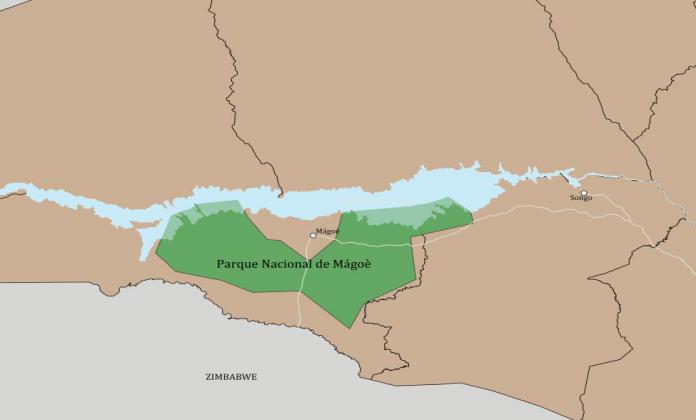With its initiated implementation phase in the overlapping area of the Zambezi Valley/ Beira Agricultural Growth Corridor, SUSTAIN Africa will work in partnership with the Conservation Areas National Administration (ANAC, MITADER) in supporting the establishment of a new Conservancy area.
Establishing a New National Park
The creation of new national parks and reserves has significantly contributed to the achievement of the 2020 Aichi Biodiversity Targets, to which the Government is highly committed. The national system of protected areas of Mozambique covers a total area of 13,941,800 ha, of which 13,580,900 ha are terrestrial and 360,900 ha are marine.
The Park has within its boundaries settlements of about 3,736 inhabitants, and the socio-economic activities are mostly subsistence, including agriculture, fishing, use of nontimber forest species, cover, and informal trade.
The proclamation of the Magoe National Park in 2013 was seen as an opportunity to strengthen the work of the Tchuma Tchato (Our Wealth) community-based natural resource management initiative in Tete Province, funded by IUCN since 1995. This project, comprising six villages in an area where the international boundaries of Mozambique, Zambia and Zimbabwe meet, involves local communities in partnership with the government and the private sector. The project supports communities to be caretakers of their wildlife resources and their region and helps people to manage the area's biodiversity, preventing poaching and over-exploitation.
Conservancy and Water Management
The Magoe National Park contributes an additional 355,852 hectares to the national protected area system in an area that has little protection from threats to the natural environment and has a high potential for community-based ecotourism development. It is reported that 60% of Tete Province has been reserved for extractive industries purposes and the announcement of the new 355,852ha Park was a great achievement. The new park opens up the potential for a unique partnership with tourism companies offering an outstanding experience in fishing, game viewing, boating, birdlife, the majestic gorge and dam, all within striking distance of an international airport. Development for tourism can be environmentally sustainable and has the potential for significant growth over the years.
The area in which the Mágoè National Park is located, while located in the south bank of the Cahora Bassa lake, is exposed to both floods and droughts, as well as man-made and climate change derived erosion. It has a Mopane forest, dominated mainly by deciduous and semi-deciduous tree species. The, riparian and mountain forest formations represent an important habitat for several wildlife species, such as Hippopotamus (Hippopotamus amphibius), Leopard (Panthera pardus), Elephant (Loxodonta africana), Lion (Panthera leo), Buffalo (Syncerus caffer) among other species protected by law. Roan antelope (Hippotragus equinus), threatened across Africa by poaching and habitat loss, also find sanctuary in Mágoè National Park.
Developing a Sustainable Approach
The government is acutely aware that the Mágoè National Park is essential for the protection of a diverse range of flora and fauna species and valuable ecosystems in an area that has a high level of proposed coal mining initiatives. In order to fulfill its purpose, this newly-proclaimed National Park requires a strong sustainable and inclusive development approach.

